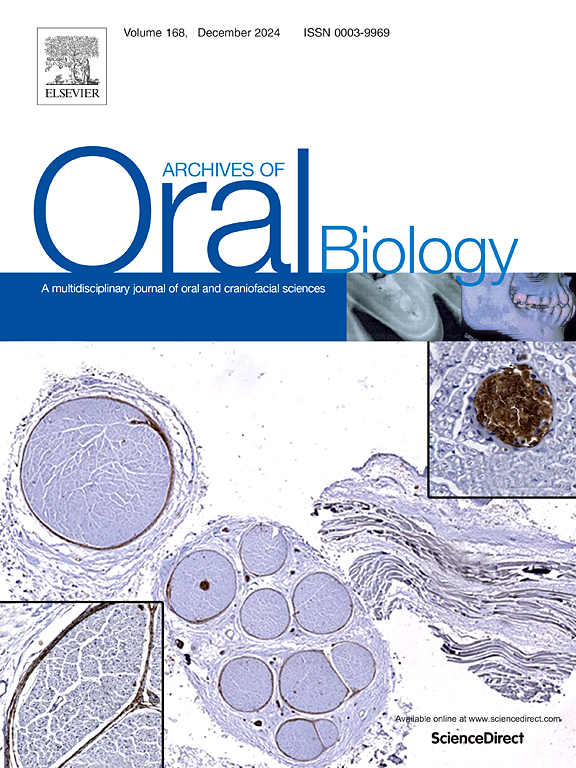Three-dimensional analysis of lip and chin movements during mastication with artificial nasal obstruction
IF 2.2
4区 医学
Q2 DENTISTRY, ORAL SURGERY & MEDICINE
引用次数: 0
Abstract
Objective
This study aimed to investigate the effects of nasal obstruction on the coordinated movement of perioral tissues during mastication using a motion capture system.
Design
Twelve healthy adult participants were instructed to chew gum only on their habitual masticatory side for 30 s, with and without nasal obstruction. Nasal obstruction was induced by blocking nasal breathing with a nose clip. Movements of the upper and lower lips, left and right corners of the mouth, and chin during gum chewing were measured using a motion capture system, and the differences between participants with and without nasal obstruction were compared. Multilevel linear model analysis was used to evaluate inter-individual and intra-individual variations in lip and chin movements, both with and without nasal obstruction.
Results
The chin chewing cycle duration was significantly longer in participants with nasal obstruction. The chewing cycle distance of the upper lip was significantly shorter in participants with nasal obstruction. The intra-individual variation in the chewing cycle distance of the chin and lips increased with nasal obstruction, whereas the inter-individual variation decreased.
Conclusions
Nasal obstruction causes unstable yet uniform movements of the chin and lips during mastication, while also restricting upper-lip movement. Our results indicate that nasal obstruction may significantly affect mandibular and lip movements during mastication. These findings highlight the importance of nasal breathing in maintaining stable perioral movements during mastication. This study provides new insights that could inform clinical strategies for managing oral function in individuals with nasal obstruction.
人工鼻塞患者咀嚼过程中唇颏运动的三维分析。
目的:利用运动捕捉系统研究鼻塞对咀嚼过程中口腔周围组织协调运动的影响。设计:12名健康的成年参与者被指示只在他们习惯咀嚼的一侧咀嚼口香糖30 s,有或没有鼻塞。用鼻夹阻断鼻腔呼吸引起鼻塞。使用运动捕捉系统测量咀嚼口香糖时上下唇、左右嘴角和下巴的运动,并比较有鼻塞和没有鼻塞的参与者之间的差异。采用多水平线性模型分析来评估有或无鼻塞时唇部和下巴运动的个体间和个体内变化。结果:鼻塞组咀嚼周期明显延长。鼻塞患者上唇咀嚼循环距离明显缩短。随着鼻塞的发生,下巴和嘴唇咀嚼周期距离的个体内变异增大,而个体间变异减小。结论:鼻塞导致咀嚼时下巴和嘴唇的运动不稳定但均匀,同时也限制了上唇的运动。我们的研究结果表明,鼻塞可能会显著影响咀嚼时下颌和嘴唇的运动。这些发现强调了鼻呼吸在咀嚼过程中维持稳定的口周运动中的重要性。本研究提供了新的见解,可以为管理鼻塞患者口腔功能的临床策略提供信息。
本文章由计算机程序翻译,如有差异,请以英文原文为准。
求助全文
约1分钟内获得全文
求助全文
来源期刊

Archives of oral biology
医学-牙科与口腔外科
CiteScore
5.10
自引率
3.30%
发文量
177
审稿时长
26 days
期刊介绍:
Archives of Oral Biology is an international journal which aims to publish papers of the highest scientific quality in the oral and craniofacial sciences. The journal is particularly interested in research which advances knowledge in the mechanisms of craniofacial development and disease, including:
Cell and molecular biology
Molecular genetics
Immunology
Pathogenesis
Cellular microbiology
Embryology
Syndromology
Forensic dentistry
 求助内容:
求助内容: 应助结果提醒方式:
应助结果提醒方式:


